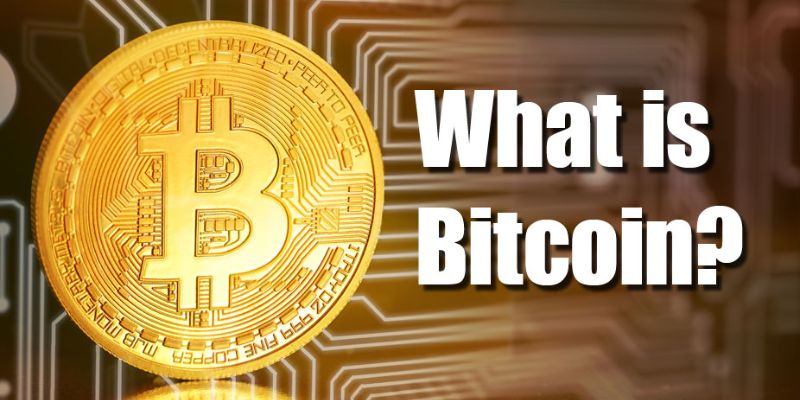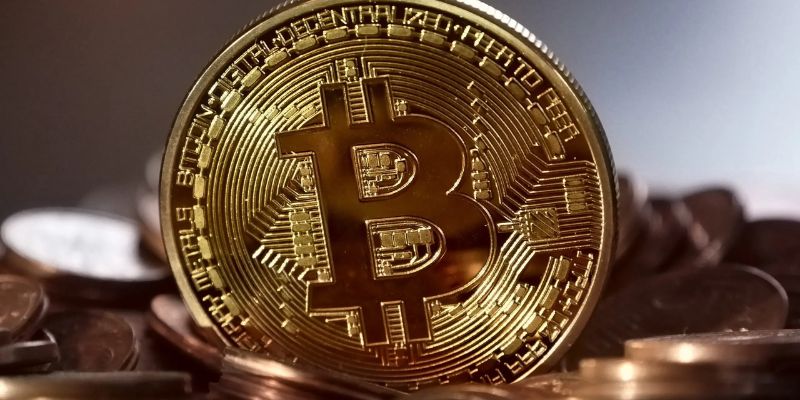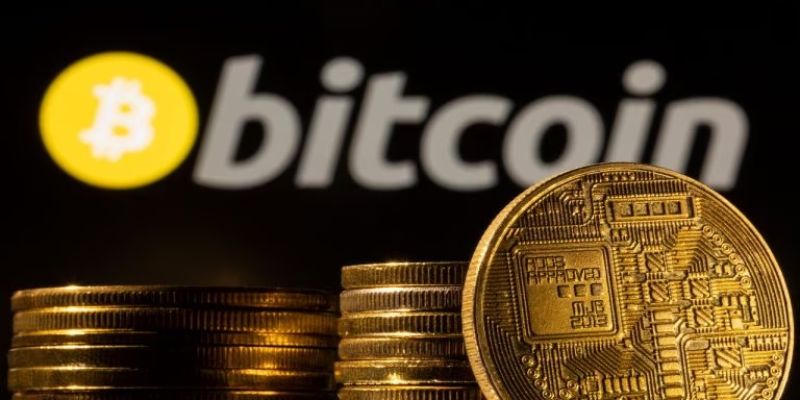What is Bitcoin? You’ve heard it called digital gold, but what does that mean? This isn’t your grandpa’s treasure; it’s a whole new kind of wealth. Born from the digital age, Bitcoin sits at the heart of a financial revolution. Its roots dig deep into a world of cryptography, powered by a thing called blockchain. Everyone is talking about it, from tech heads to traders, yet it’s still a mystery to many. I’m here to pull back the curtain. Let’s dive into its origins, understand how it works, and see why it might just be the most exciting development in money since the coin press.
The Genesis of Bitcoin: Understanding its Roots and Purpose
Tracing the Origins: From Satoshi Nakamoto to the Whitepaper
Who brought Bitcoin to life? A person or maybe a group known as Satoshi Nakamoto did, in 2008. They wrote the Bitcoin Whitepaper. Here, Satoshi explained a new digital money. This money didn’t need banks. It’s called Bitcoin – a peer-to-peer currency for everyone.
Bitcoin started as an idea in this nine-page paper. Satoshi saw a world where you can pay anyone without big fees or waiting. No middlemen, no banks – just you and the other person. That was the goal.
Satoshi nailed it by solving a big computer puzzle – trust. How do you know I won’t spend my Bitcoin twice? The system checks. Everyone watching the network helps keep it safe. That way, we all trust Bitcoin.

Technological Breakthrough: How Blockchain Changed the Game
What’s a blockchain? Imagine it like a chain of blocks. Each block holds many Bitcoin deals. Once full, it locks and connects to the next one. So now you’ve got a long chain. It’s Bitcoin’s record book, and everyone can read it.
Who writes in this book? People with powerful computers called miners. They compete to write new pages, and they get fresh Bitcoins for doing it. But it’s tough work. Miners run big calculations to find special numbers. This keeps Bitcoin secure and reliable.
Bitcoin’s blockchain was the first of its kind. And boy, did it change things. Now, we have tons of digital money called cryptocurrencies. They all use blockchain to keep track of who owns what.
This tech lets you send and receive Bitcoin without anyone in between. Just open your cryptocurrency wallet, use public and private keys, and off goes your Bitcoin, quick and smooth. Each deal gets checked by this awesome system called proof of work before it lands in the ledger. That’s how we know it’s good.
Bitcoin nodes, which are computers all over the world, hold a copy of this blockchain. They talk to each other to make sure they agree on what’s written. If most don’t agree, that Bitcoin transaction doesn’t go through. This keeps it real and keeps us trusting Bitcoin.
The love for Bitcoin keeps growing. More people want it. They’re trading it, saving it, and sometimes buying snacks with it. Some even see Bitcoin as digital gold – a place to keep money safe when other things go bunk. But hey, remember, like any gold rush, there are risks. The BTC price can go wild. Up and down, like a rollercoaster.
Satoshi gave us more than new tech. They gave us a new way to think about money. No banks, no fuss, just us and our Bitcoins talking to each other across a super cool network. Big words aside, that’s pretty sweet. And that’s the bare-bones story of Bitcoin’s start and its purpose.
How Bitcoin Functions: The Mechanics of Digital Currencies
The Process of Bitcoin Mining: Validating Transactions and Bringing New Coins to Life
What’s at the heart of Bitcoin? Let’s talk about bitcoin mining. This is where the magic happens. Computers work hard solving puzzles. They do this to keep the network safe and create new Bitcoins.
Imagine a giant worldwide ledger. When you send Bitcoins, miners check it to make sure you really have them. They use complex math for this. Once they check it, your transaction joins others in a “block.”
These blocks then link up, forming a chain. This is the blockchain. It holds every transaction ever made. Because all blocks are linked, no one can fake a transaction.
But how do miners get new Bitcoins? They earn them as a reward for their work. Every 10 minutes or so, a new block is made. The miner who does this first wins some new Bitcoin.
This task takes a lot of electricity! So, we call the reward “Bitcoin mining.” But there’s only a certain number of Bitcoins to mine, just like real gold.
Securely Navigating the Bitcoin Network: Wallets, Keys, and Transactions
Now, how do you hold onto and use Bitcoin? With wallets and keys. A cryptocurrency wallet is not like your pocket wallet. It’s a digital way to send, receive, and store Bitcoin.
Think of it as your own personal bank. But instead of money and cards, you have digital keys. These keys are like super-secret passwords. They prove the coins are yours.
You’ve got two kinds of keys: public and private. Your public key is like your mailbox address. Anyone can use it to send you Bitcoin. Your private key, though? That’s only for you. It’s like the key to your mailbox. Only with it can you open up and use your Bitcoin.
When you send Bitcoin, you sign the transaction with your private key. This signature proves it’s really you. Remember that big ledger, the blockchain? Your transaction goes there after the miners check it and agree it’s okay. This means no one else can say they sent that Bitcoin. It’s clear and sure.
Trading Bitcoin is easy once you get the hang of these basics. You can use it to buy things or trade it like stocks. But, like stocks, the price can go up and down. So, some folks buy it hoping the value will rise. That’s why some call Bitcoin “digital gold.”
Kids, always remember: Stay safe! Keep your private key a secret. Never give it to anyone. If someone gets it, they can take all your Bitcoin. This is serious. Just like you wouldn’t give away the key to your home, guard your private key. Your Bitcoins depend on it!

The Bitcoin Marketplace: Trading, Value, and Investment Perspectives
Assessing Bitcoin’s Fluctuating Value and Market Dynamics
Bitcoin’s value goes up and down a lot. It’s like a roller coaster for your cash. People buy and sell bitcoin on wallet apps and online sites. This is called trading. Just like in old markets where folks shout to sell apples and bread, but all online.
Why does the price change so much? News, people’s choices and big world events can make the price swing. If folks feel good about bitcoin, they buy more. When they worry, they might sell. This buying and selling changes the price all the time.
Now, what moves bitcoin’s value? It’s all about how many people want it mixed with a bit of mystery. No one can make bitcoins fast. Miners use computers to solve tricky math problems. This makes new bitcoins but takes time and energy. When miners finish a block, they get bitcoins as a prize. This adds new coins to the bunch.
So, what’s Satoshi Nakamoto got to do with this? Satoshi made bitcoin. We don’t know who Satoshi really is. But, they wrote the idea for bitcoin on paper. Then, others built it.
Let’s not forget a thing called blockchain. Imagine lots of computers holding hands. They all agree on who owns which bitcoins. That’s a peer-to-peer network for you. It helps keep track of all the trades. Everyone can see, so it’s tough to cheat.
Investment in Bitcoin: Risks and Strategies for Portfolio Inclusion
Now, many folks say, “Should I put bitcoins in my money bag?” well, think hard on this. Bitcoin can be a wild ride. Sometimes the price can soar high or dive deep. That’s called volatility.
What risks come with bitcoin? Its price can change fast, which can be scary. Hackers might try to sneak into your wallet app to steal your coins. That’s why safety steps are key. Always lock up your apps and keep your keys secret. These keys are like magic passwords to your coins.
When diving into bitcoin, split your eggs into many baskets. That means, don’t put all your cash in bitcoin. Mix it up with other stuff, like stocks or bonds. That way, if bitcoin’s price drops, your whole cash pile doesn’t drop too.
Bitcoin’s not for faint hearts. But with brains and guts, you can make it part of your cash plan. Remember, always check rules about cash and taxes in your place. The law might say special things about using bitcoin.
This digital gold has some sparkle but knowing how it ticks can help you shine. Keep learning and stay sharp!

Bitcoin’s Role in the Modern Economy: Challenges and Future Potential
Legal and Regulatory Impacts on Bitcoin’s Growth and Acceptance
Bitcoin rocks the boat of traditional finance. Satoshi Nakamoto is its creator. But who is Satoshi? A mystery for sure. This digital money changed our view on cash role and control. It’s called bitcoin. No banks, just trust in a system that lets us transact directly. Each bitcoin deal gets checked by a bunch of people and machines. They use a clever setup named blockchain.
But here’s the rub. Since it’s new, laws are slow to catch up. Some places say yes to bitcoin; others say no. This back and forth makes bitcoin’s future hazy. Users need to keep an eye out for changes, as the law can affect bitcoin’s value and use. Paying taxes with bitcoin income is another twist. Every year, folks must figure out what they owe if they made money with bitcoin.
Innovations for Scalability: Exploring Lightning Network and Beyond
Let’s talk about making bitcoin zoom. It’s great but can hit a wall when too many people use it at once. Think of a busy mall with one cash lane open. Enter the Lightning Network! It’s like a VIP pass for bitcoin. It creates a special path for repeat customers, so the main bitcoin mall stays less crowded.
This Lightning Network is key for small, quick buys with bitcoin. Without it, bitcoin could be like a snail, too slow for our fast-paced world. It speeds up deals and slashes costs, so you don’t wait ages for a coffee purchase to clear.
Yet, it’s just one step on a long road to making bitcoin fly like an eagle. It’s part of a quest to give power to the people and cut the cord from old-school money control. With more brains working on it, bitcoin might just turn into what geeks call “digital gold”. Solid as a rock and shiny in its worth.
Remember, while it’s a hot topic, bitcoin is still in its kid shoes, learning to walk in a grown-up money world. It’s a mix of cool tech, rules, and big dreams. Hands down, it’s one wild ride, so buckle up. This digital money thing is on a roll, and who knows what’s next!
We’ve dived deep into Bitcoin’s world, from its birth to its bold leap in tech. We started at the very start with Satoshi Nakamoto’s vision in the whitepaper. With blockchain, we saw a tech twist that changed digital deals for good.
Then we checked out how Bitcoin works like clockwork. We saw how mining makes new coins and keeps things fair. We learned that a mix of wallets, keys, and savvy steps lets us move Bitcoin safe and sound.
We also looked at Bitcoin’s wild ride in markets. Value goes up and down, making us think long and hard about how to make Bitcoin fit in our money plans. Risks are there, but so are smart ways to play the game.
Last, we touched on Bitcoin’s growing pains and its shine in tomorrow’s money world. Law stuff shapes Bitcoin, but with new tech like the Lightning Network, it’s set to zoom even faster.
So, there it is. Bitcoin’s a giant leap for how we think about and use money. It’s more than a trend; it’s a shift in the game. From tech to trading to taking on tomorrow, Bitcoin’s journey is just starting. We’ve got the map; now let’s see where it takes us.
Q&A :
What exactly is Bitcoin?
Bitcoin is a form of digital currency, which operates independently of a central bank, using decentralized technology called blockchain for secure financial transactions. It allows users to buy, sell, or exchange directly with one another without the need for intermediaries like banks.
How does Bitcoin function?
At its core, Bitcoin functions through a technology known as blockchain. This technology is a public ledger composed of blocks, where all confirmed transactions are recorded in a chronological order. This makes it possible to track all Bitcoin transactions and prevent the issue of double-spending.
Can Bitcoin be exchanged for real money?
Yes, Bitcoin can be exchanged for traditional currency through various cryptocurrency exchanges or trading platforms. Additionally, some businesses and service providers accept Bitcoin as a form of payment, making it possible to transact using Bitcoin directly.
Is investing in Bitcoin safe?
Investing in Bitcoin carries inherent risks, just like investments in other currencies or commodities. The value of Bitcoin can be extremely volatile, and it’s important for investors to conduct thorough research and consider their risk tolerance before investing in Bitcoin.
Are Bitcoin transactions anonymous?
Bitcoin transactions are pseudonymous rather than fully anonymous. Each transaction is linked to a unique Bitcoin address—an alphanumeric string—not directly to personal identity. However, with advanced analysis, patterns can possibly be traced back to an individual, especially when combined with other information.

